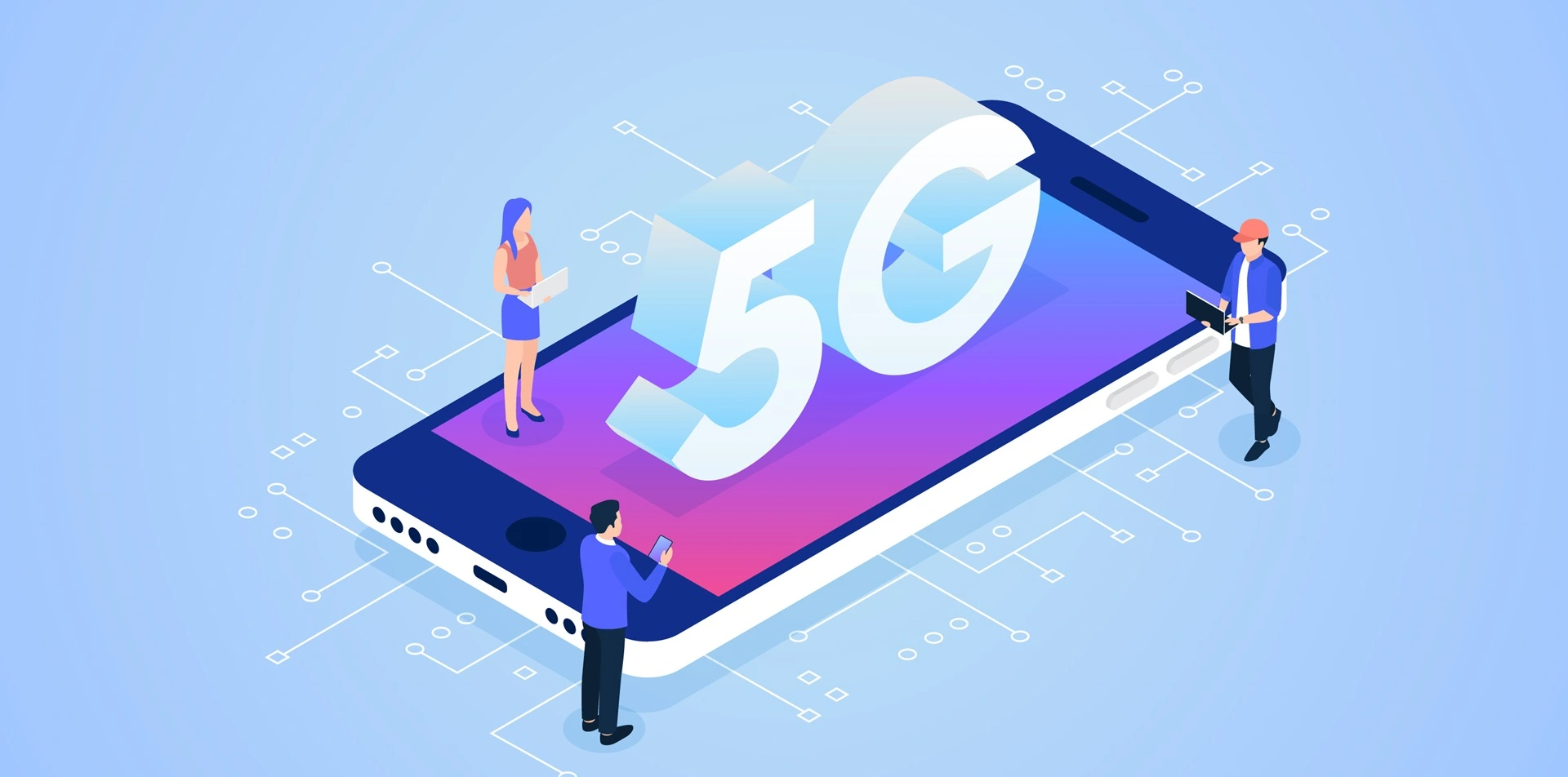- January 11, 2024 6:01 am
- by Aruthra
- January 11, 2024 6:01 am
- by Aruthra

There are currently around 3.5 billion mobile phone users around the world. Studies show that 1.4 billion mobile phones will be connected to 5G networks by 2025. The rise and adoption of 5G will revolutionize the way people make use of their networks and devices while opening the scope for new ones. This is very much possible thanks to the leaps and bounds made by 5G in terms of speed, latency, and bandwidth, among other features. 5G networks promise the rapid development of the Internet of Things (IoT) and other emerging technologies that require greater capabilities than that provided by the current dominant 4G technology. In this article, we shall see how cellular technologies evolved till the advent of 5G, how 5G expands the possibilities that mobile applications can achieve, and how 5G challenges mobile app developers to adapt and innovate in the midst of the rapidly evolving cellular landscape.
The first generation of mobile networks (1G) was introduced in the early 1980s. 1G networks made use of frequency division multiple access (FDMA) modulation. Only voice calls were possible on these networks, which frequently suffered from signal interference, reliability, and security issues.
A decade later, 2G was introduced, which used GSM for increased security and capacity. Although still slow, these networks permitted SMS and MMS messaging. As GSM technology was further developed, 2.5G was deployed, which utilized GPRS and EDGE technologies to enable packet switching. 2.5G was a bit faster compared to its predecessors, allowing users to surf the web and send e-mails.
Another decade passed before the advent of 3G technology, which while also utilizing GSM, emphasized social connectivity rather than just basic features such as voice calling. Data speeds ramped up, allowing users to partake in video calls, online gaming, web surfing, faster file sharing/downloading, and video streaming.
The efficacy and mass adoption of smartphones was primarily thanks to the introduction of 4G networks. This was the first generation to incorporate LTE (Long-Term Evolution) technology to deliver much faster speeds, which led to less buffering, better voice quality, social media services, high-quality streaming, faster download speeds, and instant messaging. While the technology is still being developed to accommodate the requirements of apps such as wireless broadband, mobile HDTV, and digital video broadcasts, it is evident that 4G is struggling to cope with the demands of the modern age.
The ongoing 5G revolution aims to achieve speeds that are at least a hundred times greater than those of 4G networks, much lower latencies (delays) by about 1/50th of 4G latencies, and connection densities that are a hundred times greater than that of 4G. This allows for massive increases in bandwidth, near real-time response rates, and more number of interconnected devices per square kilometer. 5G, therefore, meets the demands of futuristic technologies such as AR/VR/MR/XR, autonomous driving, IoT, etc. that require much greater bandwidths and speeds.
Indoor & Outdoor Use Cases: With 5G, communication has never been more seamless. With high data rates, use cases such as video chatting, high-fidelity gaming, high-resolution streaming, faster data transfers, etc. are much easier and more reliable than in 4G. 5G also boasts high connection densities that raise 4G’s capacities from thousands of simultaneously connected devices to millions.
Photo & Video UX Enhancements: While loading high-resolution images and streaming high-quality videwos takes much less time on 5G as compared to 3G or 4G, it stands to reason that even more could be done with 5G’s speed capabilities, such as enhancing media with AR/VR/MR/XR. This is a major breakthrough for developers who can now easily and confidently enhance application UI/UX to greater levels of perfection.
Application Performance & Responsiveness: Thanks to prefetching and caching techniques that are all the more effective over 5G, applications can be designed to be more responsive and high-performing. 5G is on average a hundred times faster than 4G, spelling not only greater download speeds but snappier application performance. Networks consisting of mobile devices that were used to carry out important decisions were viewed with some concern over 4G with the amounts of latency that is bound to occur. However, 5G cuts the latency levels by 50 times, resulting in minor delays and problems rather than major ones.
Application Design & Architecture Optimization: 5G cellular technology presents new complexities when it comes to mobile application development. Resources need to be expended so that developers are trained in 5G technology-specific concepts such as protocols, APIs, etc. to deal with the intricacies of 5G networks. These APIs and protocols have to further be incorporated into the designed apps so as to be easily compatible with 5G networks. Although 5G networks are expanding rapidly, many mobile devices lack 5G support. Mobile application developers, therefore, need to make sure that the apps they design are compatible with both 5G and older networks and respective devices. All this has to be done in such a way that none of the applications’ functionality or performance is compromised.
Application Security & Privacy: As 5G networks proliferate in the more connected environment, the massive data volumes handled by these networks will increase significantly. It is to be expected in such a situation that the increased flow of data will bring with it greater concerns in terms of security and privacy. Developers of mobile applications must therefore address and identify vulnerabilities to safeguard the data of the users of their applications. Robust security methods such as next-generation encryption algorithms, more reliable data transmission protocols, and multi-level authentication processes will prove necessary to guarantee the safety, privacy, security, and long-term viability of 5G application development.
Application Development & Testing: To handle its high-capacity, high-speed data rates, 5G cellular technology needs robust infrastructure that can be challenging to build in inaccessible and non-urban areas. If the infrastructure for 5G is underdeveloped, the speed and performance benefits that make 5G stand out become limited and diminished. This makes it a major challenge for developers when developing high-speed mobile applications. It is advisable for developers to use APIs and SDKs to harness the myriad features and capabilities of 5G networks to their greatest extent. In this way, the actual development process - best done using methodologies such as Agile - is simplified significantly for faster feature additions. It is also recommended that developers test their applications on actual 5G networks to gauge app performance.
While 5G does open up new avenues for mobile applications, demands are also made on developers to adapt to the needs of the new technology horizon. It is crucial for enterprises that want to incorporate 5G into their production cycles to choose skilled and experienced developers who can tackle the challenges of 5G-centric mobile application development. With a seasoned development firm such as Vofox Solutions, companies can rest easy while their mobile app development needs are met in 5G-compatible ways. Contact us today to learn more about how you can get started on riding the next cellular technology wave with us.
Guaranteed Response within One Business Day!

The Complete Guide to Outsourcing Software Development

Choose the Right Software Development Methodology: Agile vs. Waterfall vs. Hybrid

The Importance of Cybersecurity in Software Development

How to Manage Communication & Collaboration With Your Offshore Software Development Team

What Is the Importance of Software Maintenance